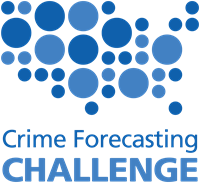Crime
Development of an Immuno-Magnetic Procedure for the Separation of Spermatozoa from Vaginal Epithelial Cells
Forensic Evidence and Criminal Justice Outcomes in Sexual Assault Cases
An NIJ-funded study explored injury and forensic evidence in sexual assault cases using data from different types of medical examiners, laboratories, and the police.
Drug-Facilitated Sexual Assaults
A Theory-Driven Algorithm for Real-Time Crime Hot Spot Forecasting, Report to NIJ
Evaluation of the Enhanced Collaborative Model to Combat Human Trafficking
Physiological and Psychological Responses to Critical Incidents among Correctional Officers
Identifying and Informing Strategies for Disrupting Drug Distribution Networks: An Application to Opiate Flows in Pennsylvania
Development of Advanced Computation and Geographic Visualization Methods for Geospatial and Temporal Strategic Risk Assessment of Crime
Typing Highly Degraded DNA Using Circularized Molecules and Target Enrichment
Identification and Detection of Cosmetics Transferred during Close Personal Attacks
Devlan: Automated Acquisition of Digital Evidence from Large Networks
Improving Seminal Fluid Detection Sensitivity in Extended Post-Coital Intervals by QQQ Mass Spectrometry
A Point Process Model with Spatiotemporal Covariates for Predicting Crime
Indicators of Sex Trafficking in Online Escort Ads
Increasing Safety in High Need Schools: an Evaluation of Therapeutic Crisis Intervention for Schools
A Confirmatory Test for Sperm in Sexual Assault Samples using a Microfluidic-Integrated Cell Phone Imaging System
Real-Time Crime Forecasting Challenge Posting
The Real-Time Crime Forecasting Challenge seeks to harness the advances in data science to address the challenges of crime and justice. It encourages data scientists across all scientific disciplines to foster innovation in forecasting methods. The goal is to develop algorithms that advance place-based crime forecasting through the use of data from one police jurisdiction.
On this page find:
National Best Practices for Sexual Assault Kits: A Multidisciplinary Approach
Recommendations for a victim-centered approach in responding to sexual assault cases.
The Most Important Features for an Effective Sexual Assault Response Team
Sexual Assault Response Teams hold the promise of improving victim experiences, increasing prosecution rates, and reducing sexual assaults. To understand how effective SARTs work, researchers studied the structure and operations of SARTS across the U.S.



